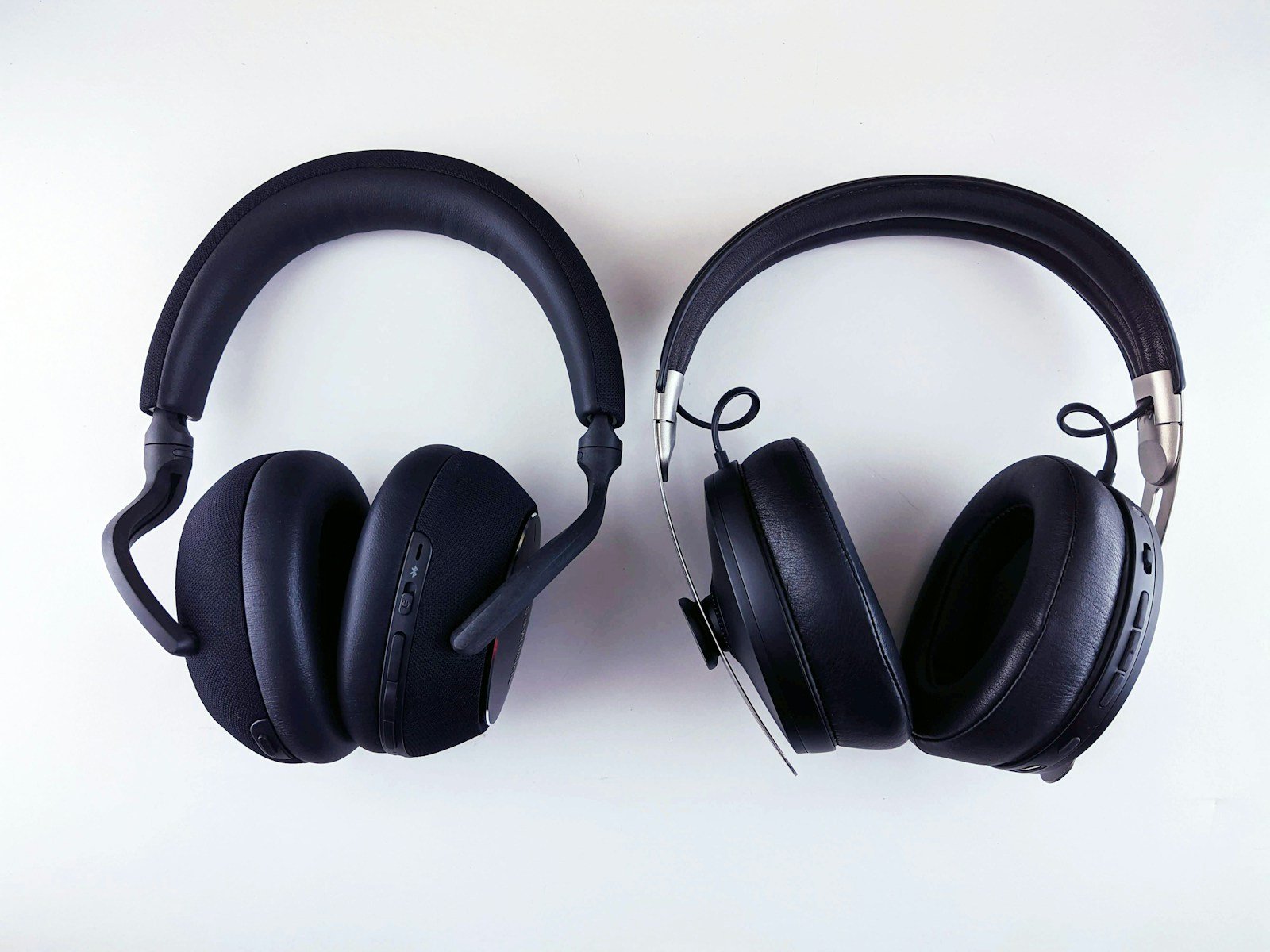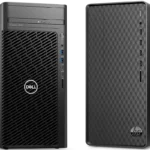Open-back headphones are the closest thing most listeners get to the feel of a well-treated listening room. By leaving the ear cups ventilated, manufacturers remove the “acoustic pressure cooker” effect that sealed cups create. Air moves freely around the drivers, allowing transients to bloom naturally, decay to fade without reflections, and stereo cues to spread far beyond the ear cups. The result is a soundstage that feels wider, deeper, and more honest than what you’ll hear from closed designs.
That freedom comes with trade-offs. Because the backs of the cups are open, sound leaks both ways—you’ll hear the room, and the room will hear your music. They’re best in quiet spaces where immersion, detail retrieval, and fatigue-free listening matter more than isolation.
What Makes a Great Open-Back Headphone?
Driver technology
Dynamic drivers still dominate under $300, but planar-magnetic models like the HIFIMAN HE400SE have reached price points unthinkable a decade ago, bringing faster impulse response and lower distortion within reach of budget-minded audiophiles.
Impedance and efficiency
Many classics—Sennheiser’s 300-ohm HD 600 line or Beyerdynamic’s 250-ohm variants—benefit enormously from a dedicated amp. A laptop or phone can power them, but a clean 100 mW+ into high impedance loads unlocks their full bass extension and micro-detail.
Comfort and build
Six-hour mixing sessions aren’t unusual with open-backs; plush velour pads, self-adjusting headbands (AKG K240 Studio), and sub-300 g weight (Sony MDR-MV1, Audio-Technica ATH-R50x) prevent hotspots and clamp-fatigue. Replaceable parts extend lifespan and resale value.
Use case
Gamers prize imaging precision (HD 560 S, SHP9600). Mixing engineers want neutrality (HD 600/650, DT 990 Pro). Casual listeners might prioritize musical warmth and price-to-performance (Grado SR60x, Samson SR850).
Below is every model we tested, ranked in the sequence they appeared in our internal notes. Use it as a quick comparison tool—click any price link to jump straight to the latest Amazon listing.
| Rank | Model | Price |
|---|---|---|
| 1 | Beyerdynamic DT 990 Pro | Click to Check |
| 2 | Sennheiser HD 599 | Click to Check |
| 3 | Sennheiser HD 560 S | Click to Check |
| 4 | Sennheiser HD 599 Open Back | Click to Check |
| 5 | Philips SHP9600 | Click to Check |
| 6 | Sennheiser HD 650 | Click to Check |
| 7 | Audio-Technica ATH-AD700X | Click to Check |
| 8 | Sennheiser HD 600 | Click to Check |
| 9 | Sennheiser HD 490 PRO | Click to Check |
| 10 | Audio-Technica ATH-R50x | Click to Check |
| 11 | Samson SR850 | Click to Check |
| 12 | GRADO SR60x | Click to Check |
| 13 | AKG K240 Studio | Click to Check |
| 14 | HIFIMAN HE400SE | Click to Check |
| 15 | Sony MDR-MV1 | Click to Check |
| 16 | Linsoul Kiwi Ears Ellipse | Click to Check |
How to Match the Right Headphone to Your Setup
- Entry-Level Hi-Fi (onboard laptop or phone power): Pick efficient models around 32–60 Ω such as the Philips SHP9600 or Samson SR850. You’ll gain the open-back soundstage without adding an external amp.
- Serious Desktop Listening: A modest DAC/amp combo opens legendary mid-fi designs—HD 560 S, HD 600, ATH-AD700X—revealing midrange texture and instrument placement that closed rivals hide.
- Reference Mixing & Mastering: Neutrality trumps “fun.” Engineers gravitate to HD 600/650, DT 990 Pro, or the new HD 490 PRO with its ear-pad voicing options and spatial-mix plugin bundle.
- Next-Gen Planar Experience: If you’ve only heard dynamic drivers, the under-$150 HIFIMAN HE400SE is the cheapest way to sample planar snap and treble smoothness—just be ready for a desktop amp.
- Lightweight All-Day Wear: Sony’s MDR-MV1 (226 g) and Audio-Technica’s ATH-R50x (207 g) disappear on the head, making them perfect for long programming or writing sessions where closed cans grow fatiguing.
Amp Pairing Quick-Reference
| Impedance | Typical Voltage Swing Needed | Good Amp Targets |
|---|---|---|
| ≤ 32 Ω | 1 V RMS | Portable dongle DACs, phones |
| 50–100 Ω | 2–3 V RMS | FiiO K11, Schiit Magni Heretic |
| 250 Ω (DT 990 Pro) | 4–5 V RMS | Topping A30 Pro, Schiit Asgard 3 |
| 300 Ω (HD 600/650) | 5–6 V RMS | JDS Atom Amp +, Drop x Cavalli CTH |
With the right pairing, open-back headphones reproduce recordings the way mastering engineers intended—airy, uncompressed, and fatigue-free. Whether you’re stepping up from gaming headsets or refining a high-end chain, the models above prove that reference-grade sound no longer demands multi-thousand-dollar budgets.
Best Open Back Headphones
We’ve tested many headphones to find the top open back models for your listening needs. Open back headphones offer wider soundstages and more natural audio than closed designs. Our list includes options for different budgets and uses, from casual listening to professional audio work.
Beyerdynamic DT 990 Pro Headphones
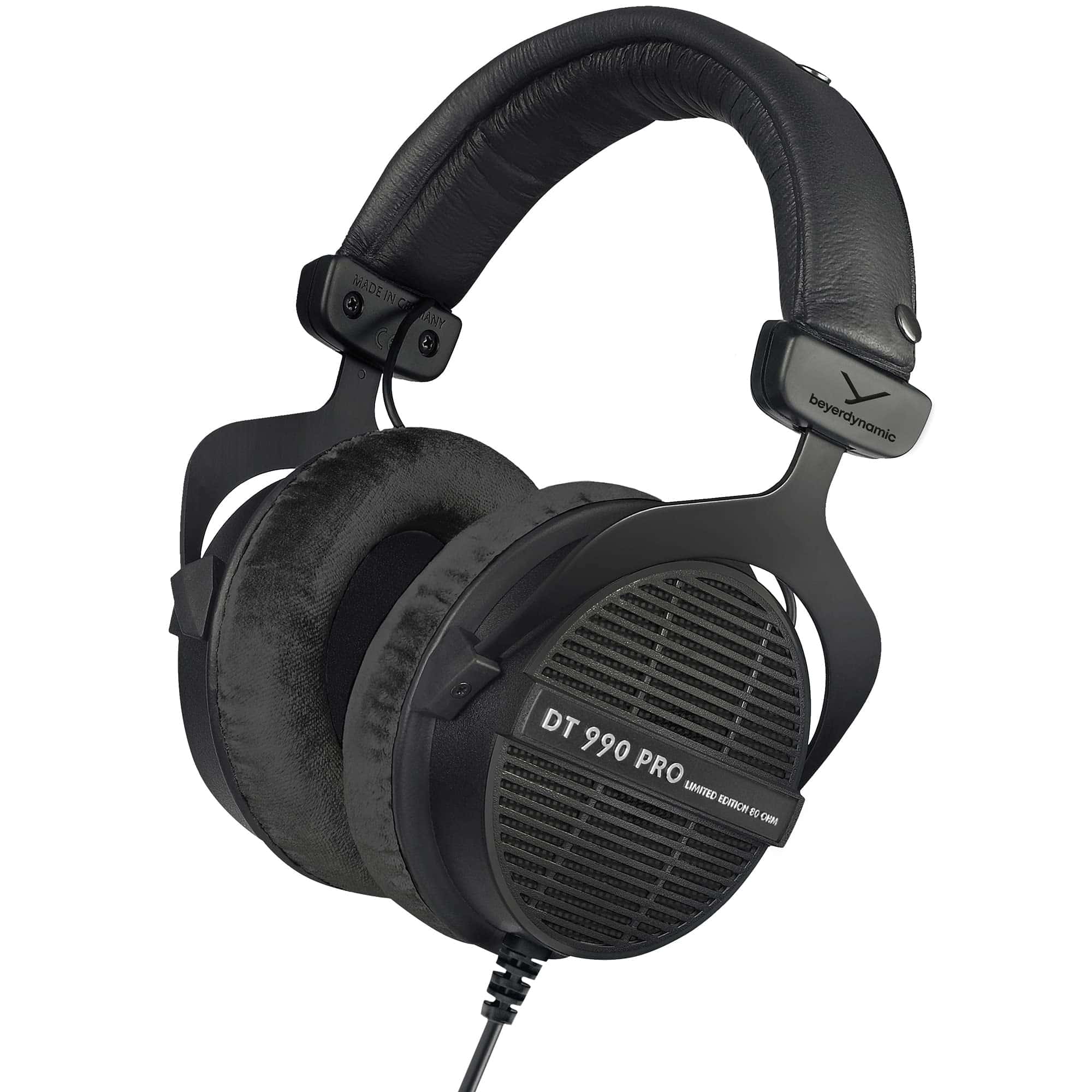
These German-made open-back headphones offer amazing sound quality and comfort that make them an excellent choice for both home listening and studio work.
Pros
- Outstanding sound clarity with wide soundstage
- Very comfortable for long sessions
- Built to last with replaceable parts
Cons
- Bass isn’t as powerful as closed-back models
- Sound leaks out (not for public use)
- Needs good amplification to sound their best
We’ve tested many headphones, but the Beyerdynamic DT 990 Pro stands out for its excellent balance of price and performance. These 80 Ohm open-back headphones deliver a spacious sound that makes music feel alive. The open design lets you hear details in your music you might have missed before.
The comfort level is truly impressive. Soft velour ear pads feel gentle against your skin, and the padded headband distributes weight evenly. We wore these for 6-hour mixing sessions without the ear fatigue that cheaper headphones cause. The build quality is solid too – these are made in Germany with a metal frame that flexes without breaking.
Sound-wise, these headphones shine with clear highs and detailed mids. Vocals sound natural, and instruments have room to breathe in the mix. While bass isn’t as thumpy as closed-back models, it’s more accurate – perfect for mixing work. The cable is non-detachable but tangle-resistant. For the price, we find these headphones offer professional-grade sound that works for both serious studio use and enjoyable listening at home.
Sennheiser HD 599
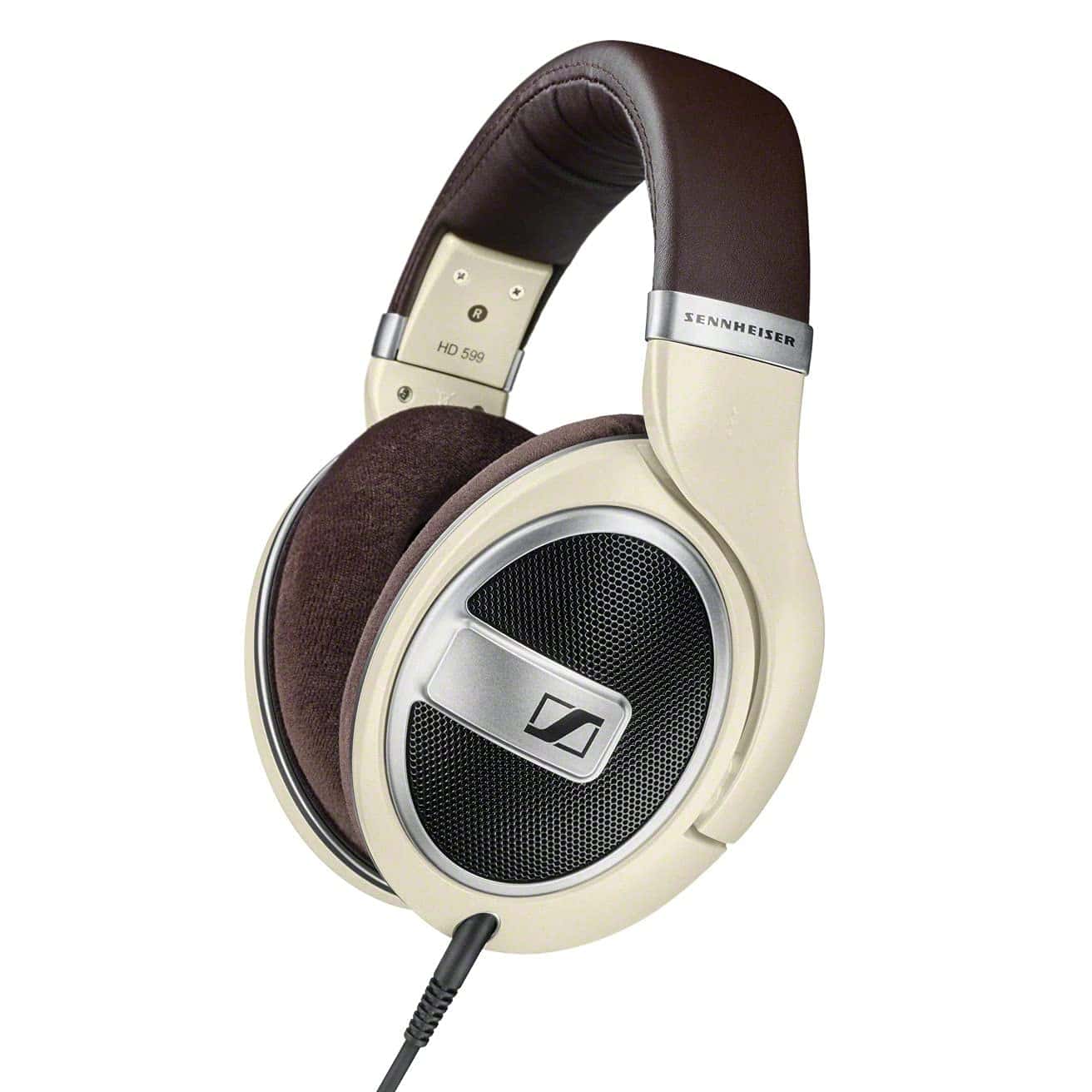
The Sennheiser HD 599 offers near-audiophile sound quality with exceptional comfort, making it a top choice for anyone seeking premium open-back headphones without breaking the bank.
Pros
- Incredibly comfortable for long listening sessions
- Wide, natural soundstage with clear audio separation
- Versatile connectivity with both 3.5mm and 6.3mm cables included
Cons
- Sound leakage makes them unsuitable for public use
- Plastic build feels less premium than some competitors
- Bass response may be too modest for some listeners
We recently spent time with the Sennheiser HD 599, and these open-back headphones truly impressed us. The ivory and brown color scheme gives them a distinctive, sophisticated look that stands out from typical black headphones. Their large ear cups with velour padding create a gentle, pressure-free fit that remained comfortable even after several hours of use.
Sound quality is where these headphones truly shine. The open-back design creates a spacious, airy soundstage that makes music feel alive. We noticed excellent clarity in the midrange, with vocals and acoustic instruments sounding particularly natural. While the bass isn’t overwhelming, it’s tight and accurate – perfect for genres like classical, jazz, and folk music.
The HD 599 comes with two detachable cables – a longer 3-meter cable with a 6.3mm jack for home audio equipment and a shorter 1.2-meter cable with a 3.5mm connector for mobile devices. This flexibility is extremely useful. The 50 ohm impedance means they don’t necessarily need an amplifier to sound good, though we found they do benefit from one. For the price, these headphones offer exceptional value with performance that competes with much more expensive models.
Sennheiser HD 560 S
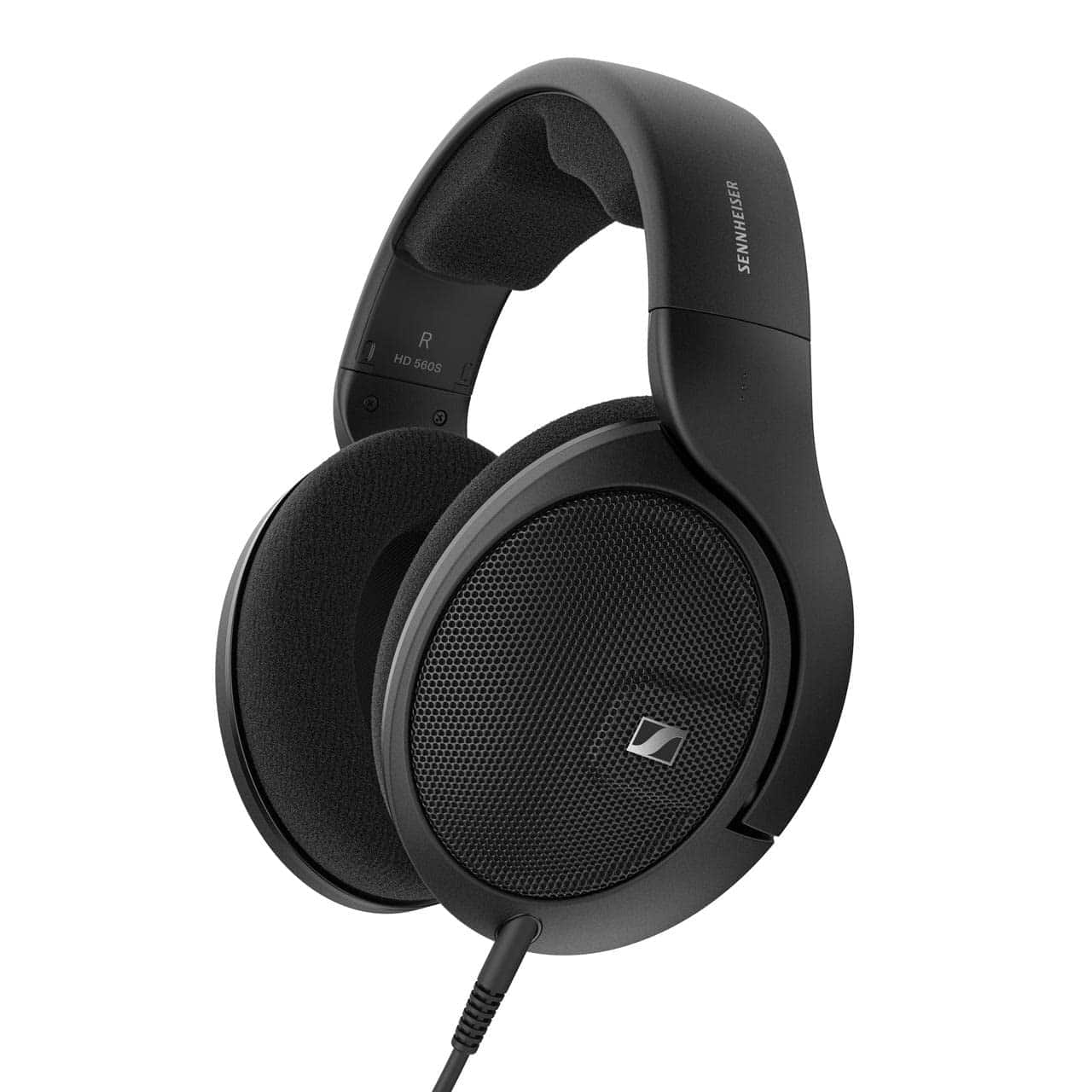
The Sennheiser HD 560 S headphones offer exceptional sound accuracy and comfort that make them a top choice for listeners who want to hear music exactly as it was meant to be heard.
Pros
- Natural, detailed sound with excellent clarity across all frequencies
- Extremely comfortable for long listening sessions with velour earpads
- Wide, spacious soundstage that makes music feel lifelike
Cons
- Requires good audio source to reach full potential
- Sound leaks in and out due to open-back design
- No included carrying case for protection
We recently spent time with the Sennheiser HD 560 S, and these open-back headphones impressed us right away. The sound quality is honest and clean, revealing details in our favorite songs we hadn’t noticed before. Bass notes come through with just the right amount of punch without overwhelming the mids and highs.
What stands out most is how these headphones create a sense of space. Music doesn’t feel stuck inside your head but spreads out naturally around you. This happens thanks to Sennheiser’s E.A.R. technology that positions the drivers at an angle matching your ears. During testing, we could pick out individual instruments in complex recordings and feel their positions in the mix.
Comfort is another win for the HD 560 S. The velour earpads stayed cool even after hours of use, and the headband distributed weight evenly. At just 240 grams, they’re light enough for marathon listening sessions. The detachable cable is sturdy and gives you flexibility if you need replacements down the road. For anyone serious about hearing music as it truly sounds, these headphones deliver outstanding value.
Sennheiser HD 599 Open Back Headphones
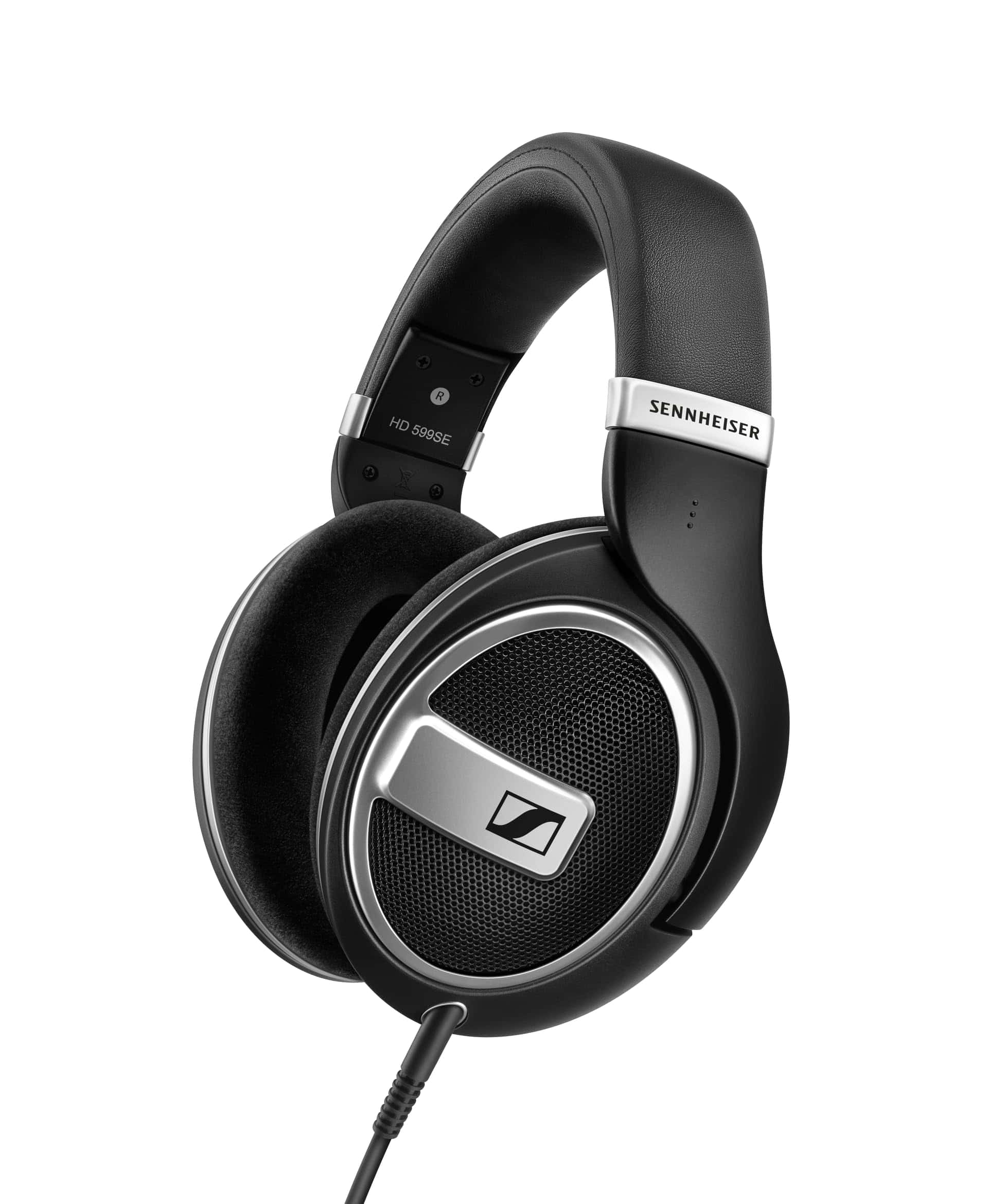
The Sennheiser HD 599 offers near-audiophile sound quality with exceptional comfort, making it a solid choice for anyone seeking premium open back headphones.
Pros
- Incredibly comfortable for long listening sessions
- Natural, spacious sound stage
- High-quality detachable cables included
Cons
- Limited bass response compared to closed-back models
- Sound leaks out (by design)
- Not ideal for noisy environments
We recently tested the Sennheiser HD 599 open back headphones and were impressed by their performance. The large ear cups fit perfectly around our ears without applying pressure, which meant we could listen for hours without discomfort. The soft ear pads feel gentle against the skin and can be replaced when worn.
Sound quality is where these headphones truly shine. The open back design creates a wide, airy soundstage that makes music feel more natural and spacious. We noticed instruments were clearly separated in complex recordings. Vocals come through with great clarity, though bass-heavy genres might feel a bit light compared to closed-back alternatives.
The build quality is solid despite the mostly plastic construction. We appreciated the included cables – a longer 3m cable with a 6.3mm jack for home use and a shorter 1.2m cable with a 3.5mm connector for portable devices. These headphones are fairly easy to drive with 50 ohm impedance, but they certainly benefit from a decent amplifier. For home listening or studio work where sound isolation isn’t needed, the HD 599 delivers exceptional value.
Philips SHP9600 Open Back Headphones
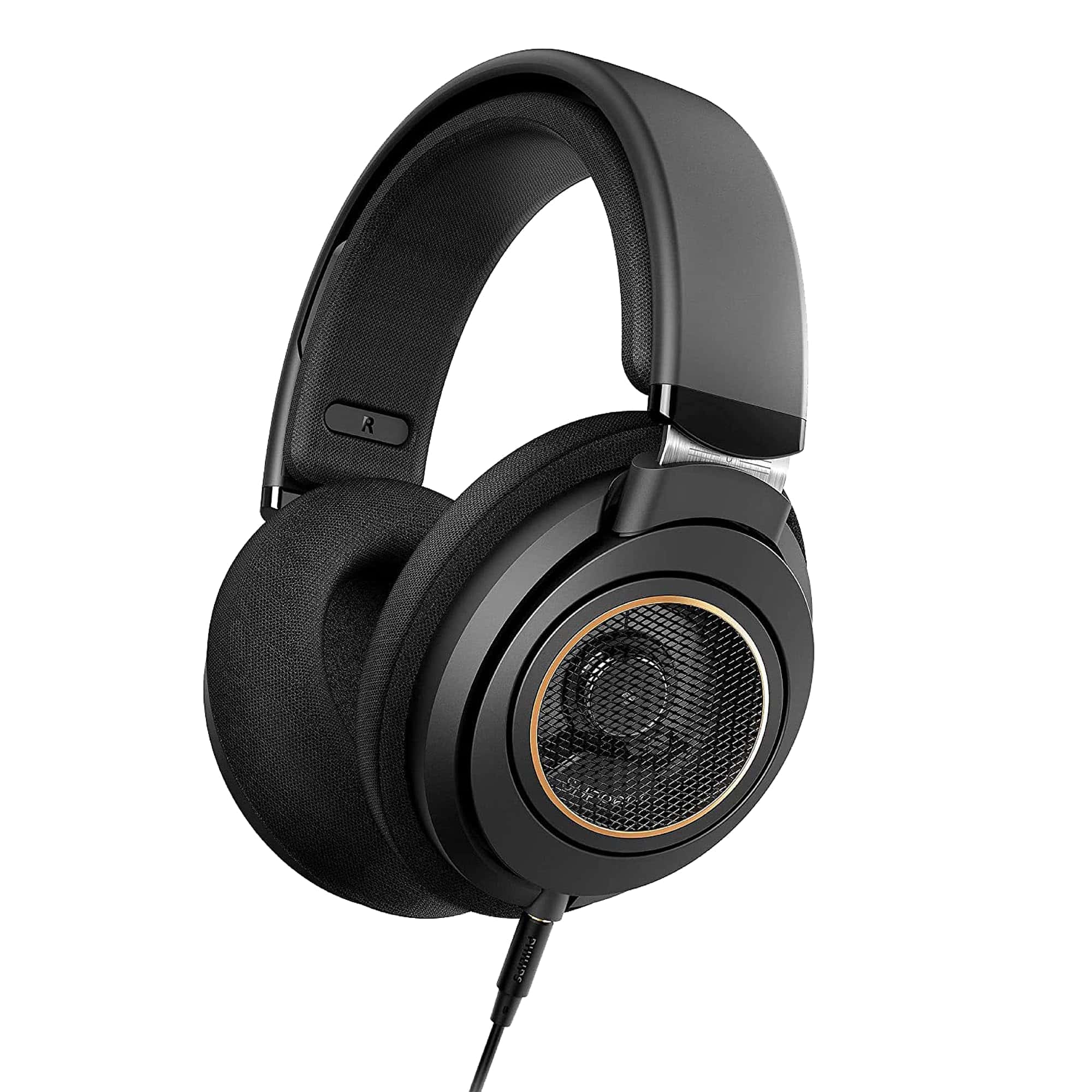
We recommend the Philips SHP9600 for anyone seeking comfortable open-back headphones with balanced sound quality at a reasonable price point.
Pros
- Extremely comfortable for long listening sessions
- Well-balanced sound with clear mids and highs
- Durable steel-reinforced headband construction
Cons
- Bass response might be light for some listeners
- Cable is somewhat bulky
- Minimal sound isolation due to open-back design
When we first put on the Philips SHP9600 headphones, the comfort immediately stood out. The double-layered headband cushion sits perfectly on the head, while the breathable ear cups create a pleasant feel even after hours of use. These aren’t just comfortable—they’re forget-you’re-wearing-them comfortable.
Sound quality is impressive for headphones in this price range. The 50mm drivers deliver clear highs and well-defined mids. We noticed vocals come through with remarkable clarity, and the open-back design creates a wider soundstage that makes music feel spacious rather than trapped inside your head. The bass is present but not overwhelming, staying true to the original recording.
The build quality surprised us. Despite being lightweight, the steel-reinforced headband provides just enough clamping force to stay secure without causing discomfort. We appreciate the detachable cable with gold-plated connections that helps prevent signal loss. The included 3.5mm to 6.3mm adapter makes it easy to connect to various devices from smartphones to dedicated headphone amps. After testing these across different setups, we found they perform well even without expensive additional equipment.
Sennheiser HD 650 Headphones

The Sennheiser HD 650 open-back headphones deliver exceptional sound quality with impressive detail that will satisfy even the most demanding audiophiles.
Pros
- Natural, spacious sound with excellent clarity
- Extremely comfortable for long listening sessions
- Detachable cable adds convenience and longevity
Cons
- Requires good amplification to reach full potential
- Not suitable for portable use or noisy environments
- Higher price point than many consumer headphones
We recently spent time with the Sennheiser HD 650, and these headphones continue to impress us with their balanced, transparent sound. The audio reproduction feels incredibly natural, allowing us to hear details in our favorite tracks that other headphones miss completely. Bass response is tight and controlled rather than overwhelming, while the mids and highs shine with remarkable clarity.
Comfort is another area where these headphones excel. The velour ear pads feel soft against the skin, and the headband provides just enough pressure to keep them secure without causing discomfort. We wore them for several hours straight and almost forgot they were there. This makes them perfect for those long listening sessions when you want to get lost in your music.
Build quality stands out immediately when handling the HD 650s. The titanium-silver finish gives them an elegant look, while the construction feels solid without making them too heavy. The detachable cable is a smart feature that extends the life of these headphones. If the cable gets damaged, you can simply replace it rather than the entire unit. For serious music lovers seeking open-back headphones with exceptional sound quality, the HD 650 remains one of our top recommendations.
Audio-Technica ATH-AD700X Open-Air Headphones
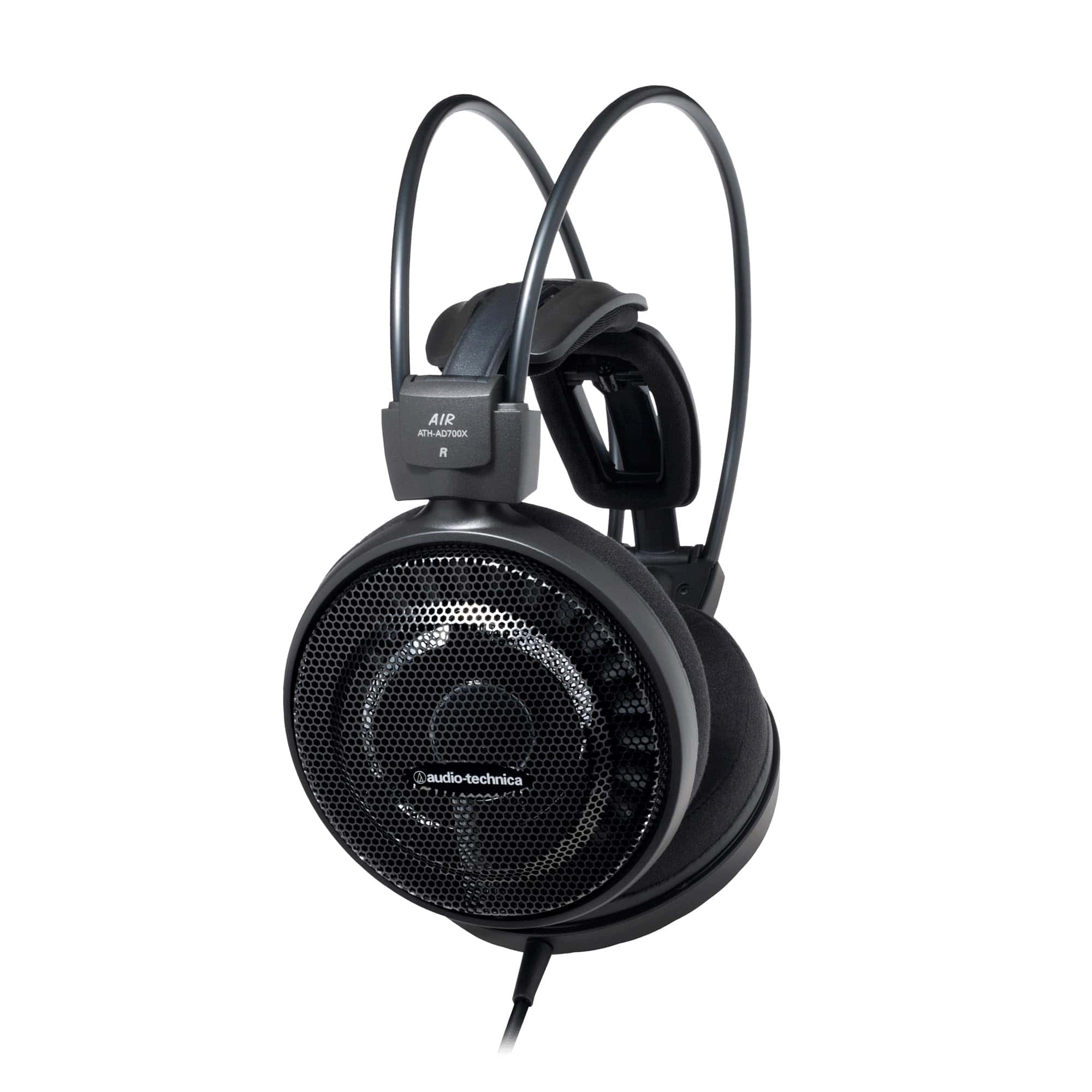
We believe these headphones are a solid choice for anyone seeking excellent sound quality with exceptional comfort for long listening sessions.
Pros
- Incredibly comfortable with unique self-adjusting wing support
- Spacious, natural sound with outstanding midrange clarity
- Lightweight design ideal for hours of listening
Cons
- Bass response is somewhat light compared to closed-back models
- Sound leakage makes them less suitable for public spaces
- Wing support system might not fit all head sizes perfectly
When we first put on the ATH-AD700X, the comfort level immediately stood out. The self-adjusting wing support system eliminated the tight clamping feeling many headphones create. These sit gently on your ears with their plush velour pads, making them easy to wear for hours without discomfort.
Sound quality truly shines with these open-backs. The 53mm drivers deliver crystal clear mids and highs with impressive detail. Vocals sound natural and instruments have room to breathe. We noticed the soundstage feels much wider than typical headphones, creating an almost speaker-like experience where audio elements feel properly placed in space.
The lightweight aluminum honeycomb casing not only keeps these headphones comfortable but also contributes to their open, airy sound signature. While testing various music genres, we found they excel with classical, jazz, and acoustic recordings. The ATH-AD700X might not satisfy bass-hungry listeners, but what they lack in low-end punch they make up for with accuracy and detail. For home listening in quiet environments, these provide an immersive experience that’s hard to match at this price point.
Sennheiser HD 600
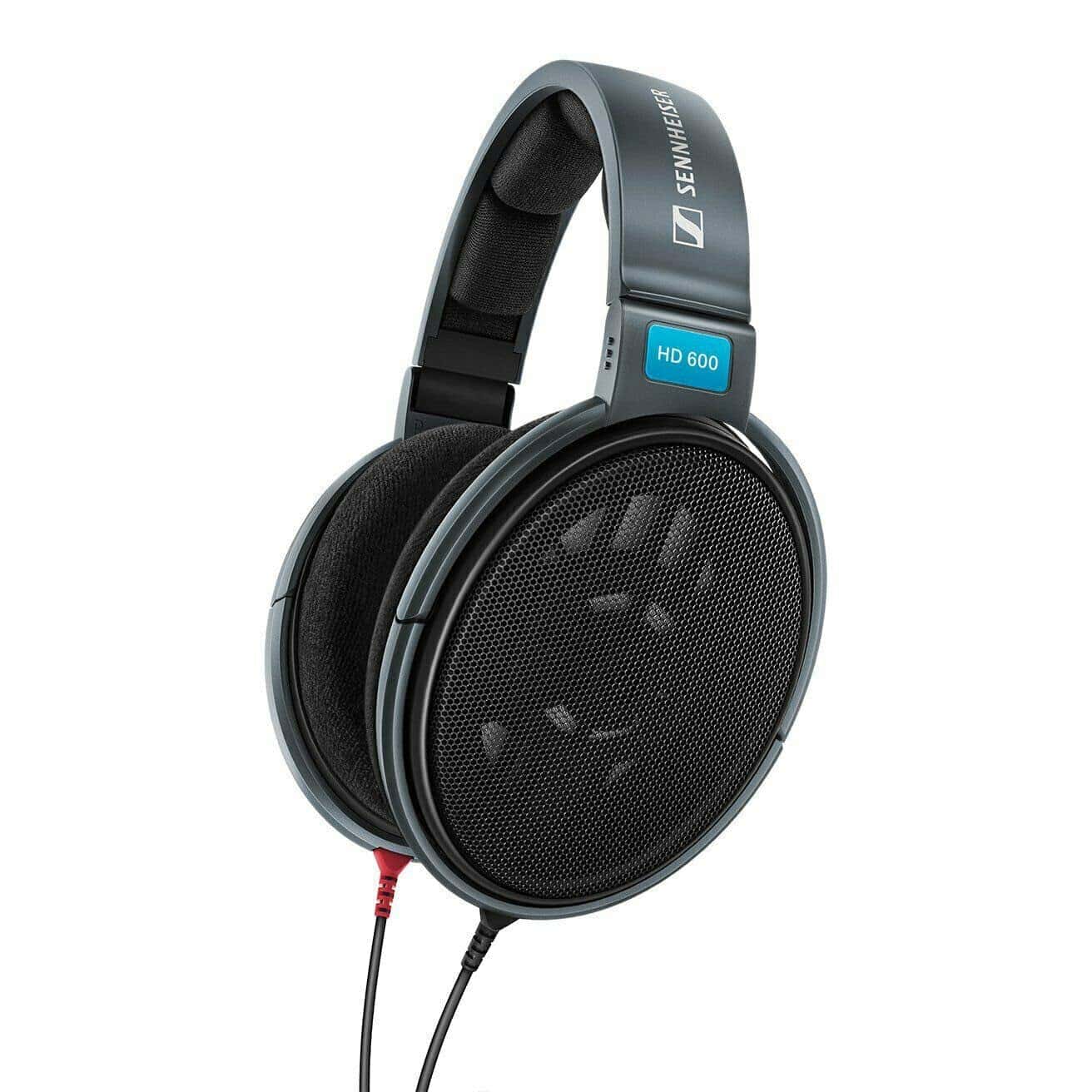
The Sennheiser HD 600 offers exceptional sound quality and comfort that will satisfy even the most demanding audiophiles.
Pros
- Natural, balanced sound with impressive clarity
- Extremely comfortable for long listening sessions
- Durable build with replaceable parts
Cons
- Requires a good amplifier to reach full potential
- Cable is somewhat bulky
- Higher price point than casual headphones
We recently spent time with the legendary Sennheiser HD 600, and these open-back headphones continue to impress us with their remarkable sound quality. Their neutral sound signature reproduces music exactly as it was meant to be heard, without artificial bass boost or treble emphasis. The spatial imaging is outstanding, making you feel like you’re sitting in the middle of a well-designed listening room.
The comfort of these headphones stands out immediately. The velour ear pads feel gentle against the skin, and the headband provides just enough pressure to keep them secure without causing discomfort. We wore them for several hours straight and barely noticed they were there. This makes them perfect for those long listening sessions when you want to get lost in your music.
Build quality is another area where the HD 600 shines. The detachable Kevlar-reinforced cable ensures longevity, and virtually every part can be replaced if needed. While they require a decent headphone amp to sound their best due to the 300-ohm impedance, the investment is worthwhile. We found these headphones particularly impressive with acoustic, classical, and jazz recordings, where their natural sound reproduction truly shows what high-fidelity audio should be.
Sennheiser HD 490 PRO
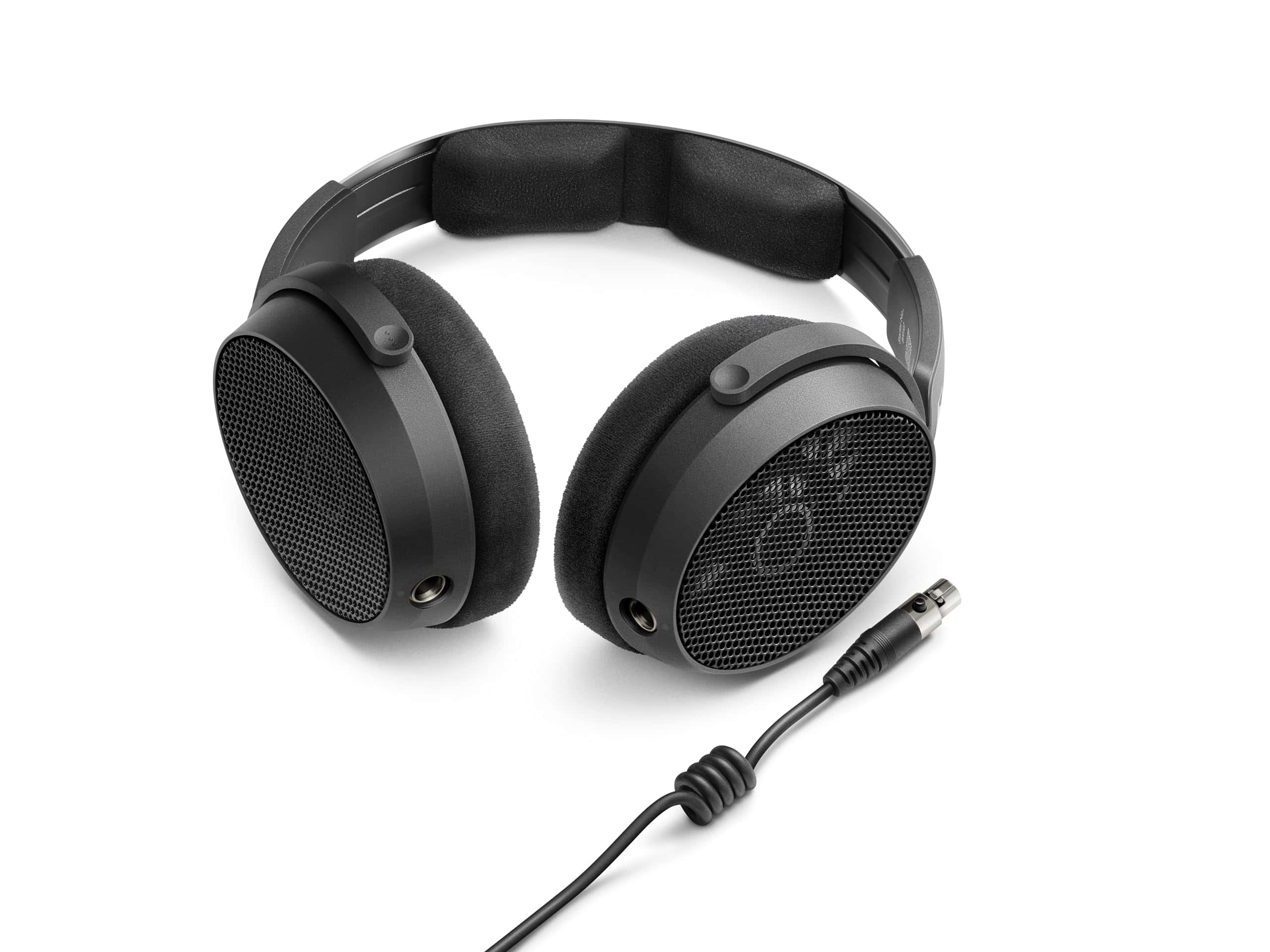
These open-back headphones offer exceptional sound quality with amazing comfort, making them worth every penny for serious music producers and audiophiles.
Pros
- Wide soundstage with clear, detailed audio across all frequencies
- Extremely comfortable for long sessions with two swappable ear pad options
- Includes valuable mixing software plugin to enhance studio work
Cons
- Higher price point than casual listening headphones
- Sound leakage makes them unsuitable for public use
- Requires good audio source to reach full potential
We spent several days testing the Sennheiser HD 490 PRO in our home studio, and these headphones truly shine for professional audio work. The open-back design creates a spacious, airy sound that feels less like wearing headphones and more like sitting in a well-tuned room. Bass response is tight and accurate without overwhelming the mids and highs.
The build quality impressed us immediately. Despite being lightweight at just 260 grams, these headphones feel solid and durable. The aluminum headband adjusts easily, and the clamping force strikes the perfect balance – secure without causing discomfort. We wore them for six-hour mixing sessions without any pain or fatigue.
Switching between the two included ear pads offers distinct advantages. The mixing pads enhance frequency detection for detailed work, while the producing pads provide a slightly warmer sound that’s easier on the ears during long creative sessions. Both are washable and replaceable, which we appreciate for long-term use. The included dearVR MIX-SE plugin is a fantastic bonus, creating virtual room acoustics that helped us make better mixing decisions.
For serious audio work, these headphones reveal details we missed on other systems. Vocals sound natural, instrument separation is excellent, and the stereo imaging is spot-on. While they’re not ideal for commuting or public spaces due to sound leakage, they’ve quickly become our go-to reference headphones for critical listening and production work.
Audio-Technica ATH-R50x Open-Back Headphones
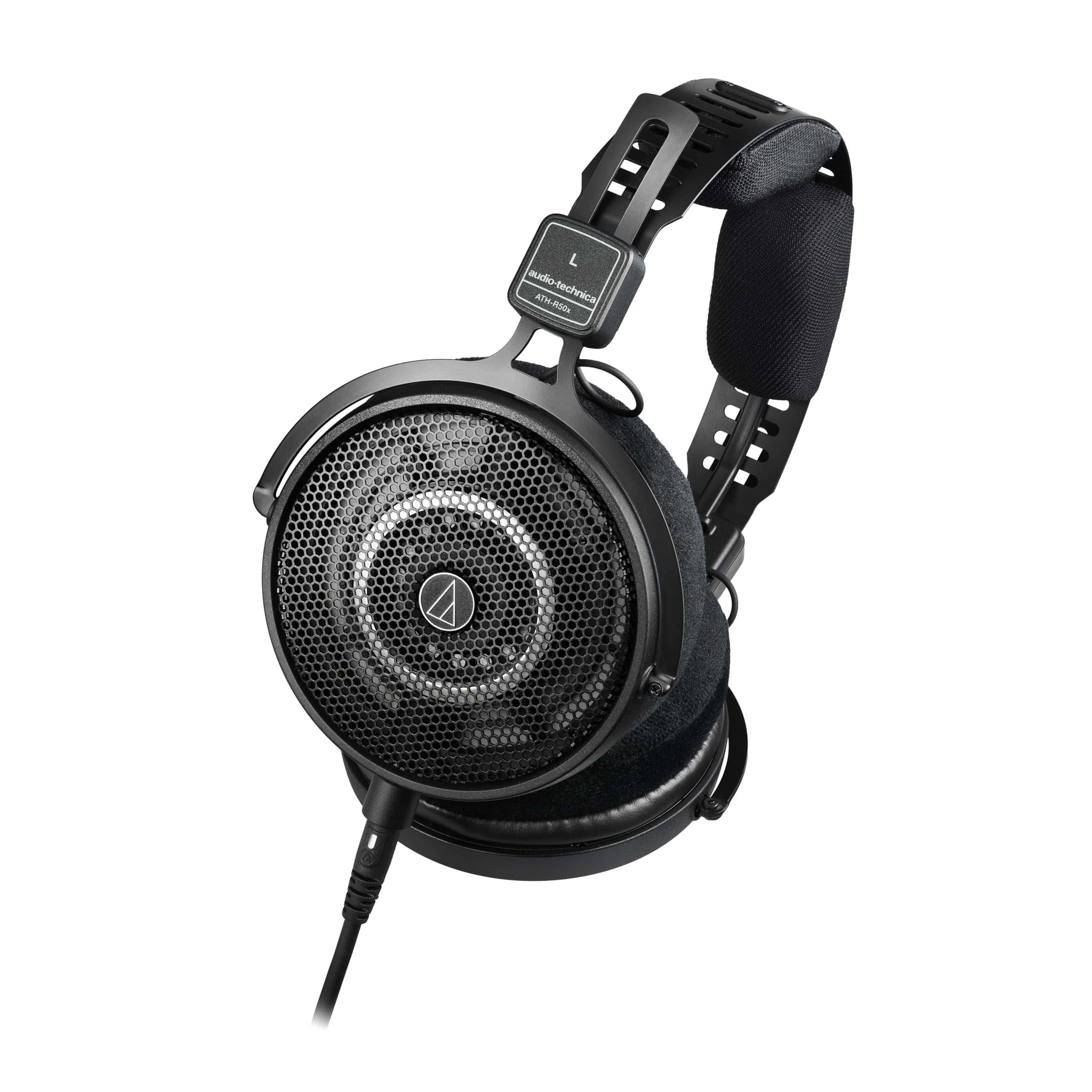
The ATH-R50x delivers impressively natural sound with extended bass that’s rare for open-back headphones, making them an excellent choice for both studio work and casual listening.
Pros
- Incredibly lightweight (207g) with comfortable fit for long sessions
- Natural, open soundstage with surprising bass response
- Two detachable cables included for different use scenarios
Cons
- Sound leakage typical of all open-back designs
- Recently released with limited long-term reliability data
- Higher price point than entry-level studio headphones
We spent time testing these new ATH-R50x headphones in our studio setup, and the sound quality immediately stood out. The open-back design creates a wide, airy soundstage that makes music feel more natural and less confined than closed-back alternatives. Bass response surprised us – it’s powerful without being overwhelming, which is uncommon for open-backs.
The comfort level deserves special mention. At just 207 grams, these headphones feel almost weightless during long mixing sessions. The updated headband design distributes pressure evenly, and the ear cups sit comfortably without excessive clamping force. We particularly appreciated this during extended use.
For professional applications, these headphones shine in critical listening tasks. Vocals and lead instruments come through with remarkable clarity in the midrange, while maintaining overall balance across frequencies. The included 3-meter and 1.2-meter detachable cables (both with secure twist-lock connections) offer flexibility for different setups. When switching between our mixing desk and laptop, this feature proved genuinely useful rather than just a spec-sheet bonus.
Samson SR850 Studio Headphones
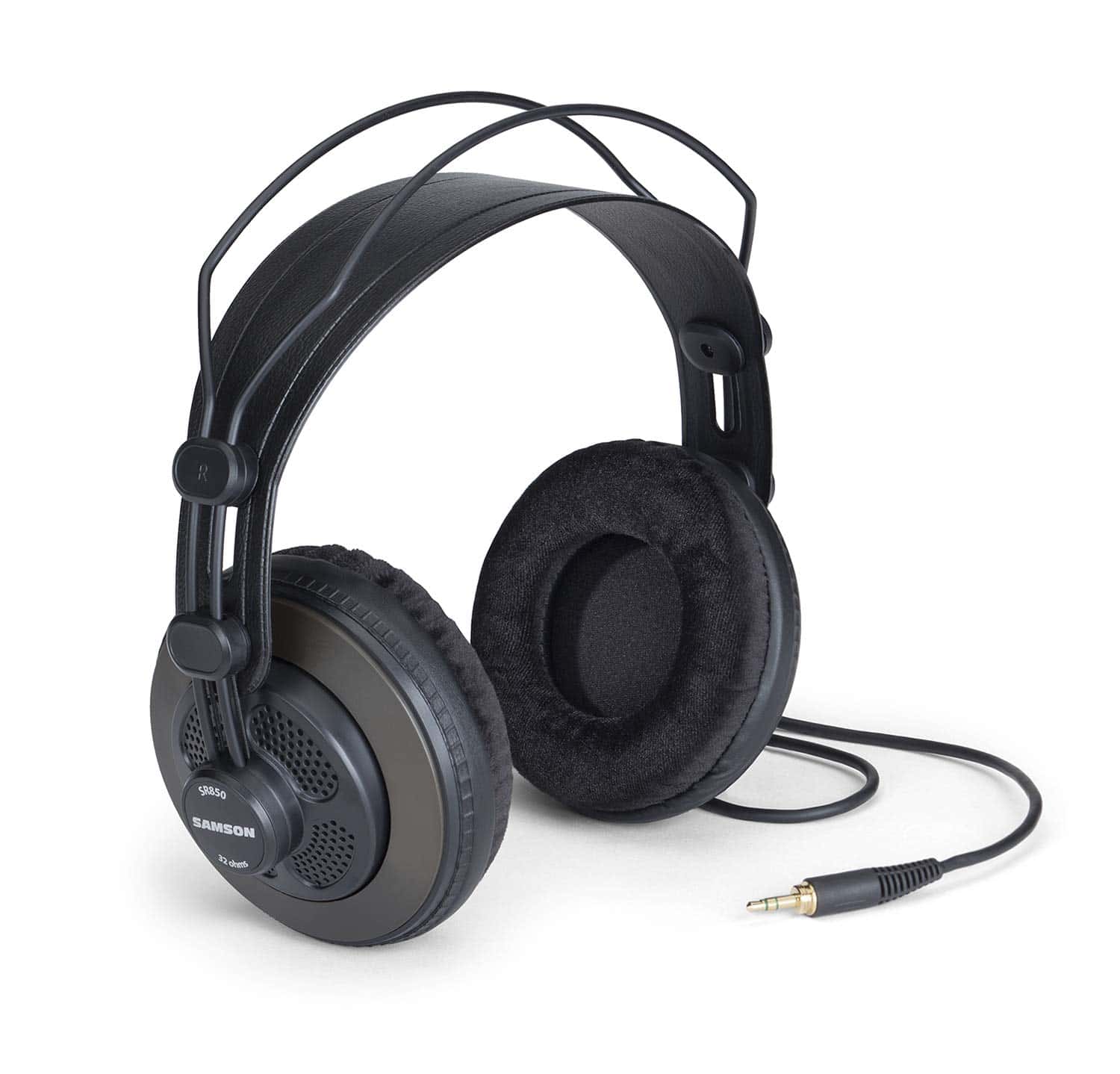
The Samson SR850 headphones offer exceptional sound quality and comfort at a budget-friendly price that makes them perfect for both studio work and casual listening.
Pros
- Rich, detailed sound across all frequencies
- Very comfortable velour ear pads
- Outstanding value for the price
Cons
- Headband may feel tight during first few uses
- Cable isn’t detachable
- May leak sound to people nearby
When we first put on the SR850 headphones, we were struck by how much sound quality Samson packed into such an affordable package. The semi-open back design creates a wide, natural soundstage that makes music feel more spacious and realistic. We could hear subtle details in songs we’ve listened to hundreds of times before.
These headphones shine with their 50mm drivers that deliver clear highs and surprisingly deep bass. During our testing, we found they handle everything from classical to hip-hop with impressive accuracy. The frequency response range (10Hz-30kHz) isn’t just marketing talk – you really can hear more detail in your music.
Comfort is another area where the SR850 stands out. The self-adjusting headband and soft velour ear cushions made our extended listening sessions much more pleasant than expected. After wearing them for several hours, we noticed only minimal fatigue. The included gold-plated adapter also makes it easy to connect to different audio equipment, whether in a home studio or with a smartphone (using the 3.5mm jack).
GRADO SR60x Headphones
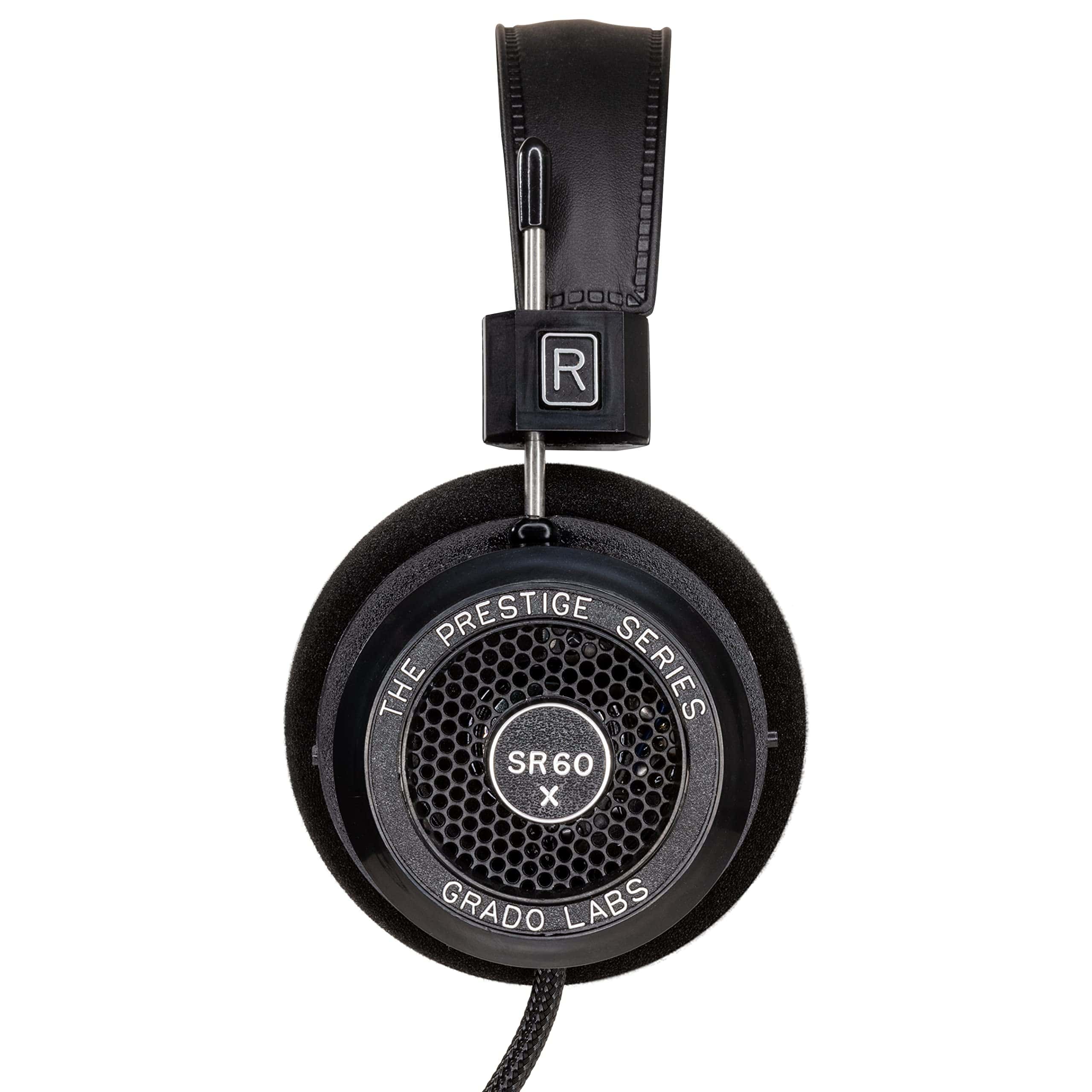
We found these affordable open-back headphones deliver impressive sound quality that punches well above their price point.
Pros
- Exceptional sound clarity with wide soundstage
- Lightweight design for extended listening sessions
- Made in New York with quality craftsmanship
Cons
- Stock ear cushions can feel uncomfortable after a while
- Sound leaks both in and out
- Cable isn’t detachable
The GRADO SR60x surprised us with its balanced sound profile and impressive detail. We noticed right away how music feels more spacious compared to closed-back models. The 44mm drivers create a natural listening experience that makes you feel like you’re sitting in front of the musicians.
Comfort is decent but not perfect. At just 12.3 ounces, these headphones won’t weigh you down during long sessions. The on-ear design stays put without clamping too hard. We did find ourselves wishing for softer ear cushions after about an hour of use.
Build quality reflects GRADO’s Brooklyn-based craftsmanship. The simple black design looks clean and professional. One drawback is the fixed cable – if it breaks, you can’t just swap it out. These headphones shine with most music types, but we especially enjoyed them with acoustic recordings and jazz. For the price, they offer a true audiophile experience without breaking the bank.
AKG K240 Studio Headphones
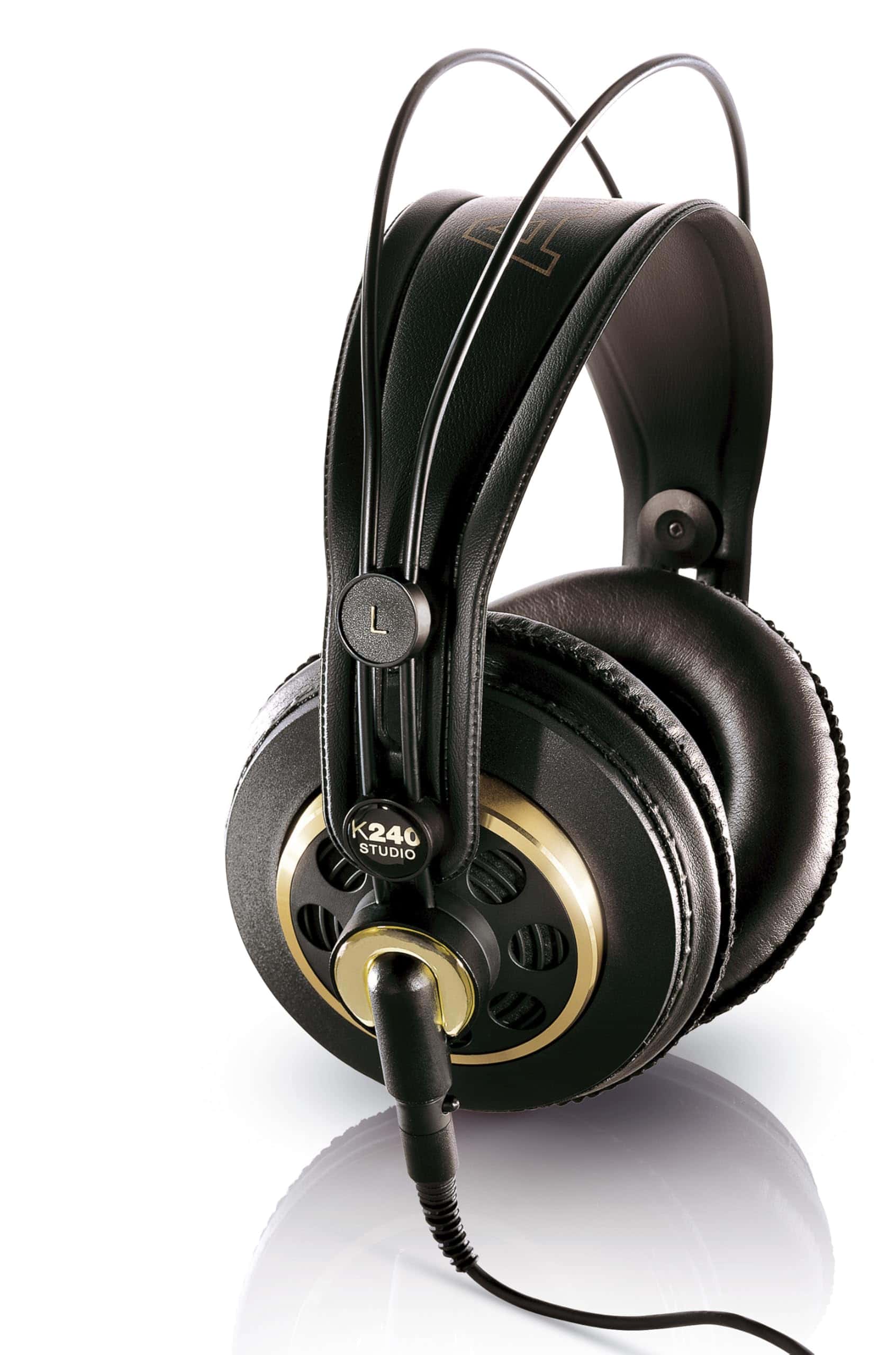
The AKG K240 Studio headphones deliver exceptional studio-quality sound at a reasonable price point, making them a smart choice for both audio professionals and casual listeners.
Pros
- Balanced sound profile with clear highs and solid bass
- Comfortable for extended wearing sessions
- Durable build quality with replaceable cable
Cons
- Requires proper amplification for best performance
- Not ideal for noisy environments due to semi-open design
- Somewhat bulky for portable use
We’ve spent considerable time with the AKG K240 Studio headphones, and they continue to impress us with their sound quality. The semi-open design creates a wider soundstage than closed-back alternatives, making instruments feel properly placed in the mix. This design choice means you can hear subtle details in your music that might otherwise go unnoticed.
The comfort level surprised us during long listening sessions. The self-adjusting headband distributes weight evenly, while the over-ear pads gently surround your ears without applying uncomfortable pressure. We wore these for several hours and didn’t experience the fatigue that often comes with extended headphone use.
Build quality stands out as a major strength. The metal headband feels sturdy, and the detachable cable means you won’t need to replace the entire unit if the cord gets damaged. At 55 ohms impedance, these headphones work reasonably well with most devices, though they truly shine when paired with a dedicated headphone amp. For studio work or critical listening at home, the K240s offer remarkable value that punches well above their price point.
HIFIMAN HE400SE Headphones
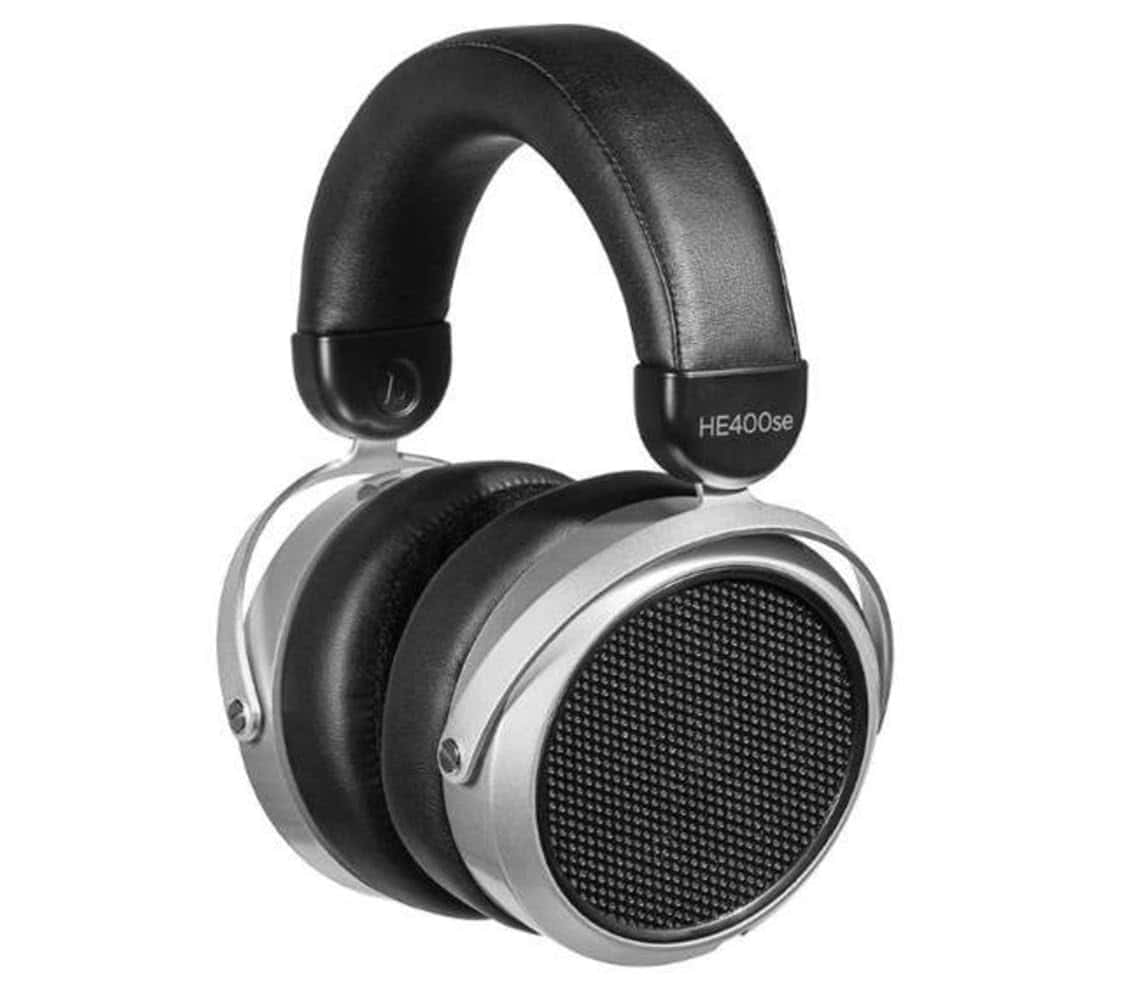
The HIFIMAN HE400SE delivers impressively clear sound quality at an affordable price point, making them an excellent entry into planar magnetic headphones for most listeners.
Pros
- Crystal clear audio with minimal distortion
- Comfortable for extended listening sessions
- Great value for planar magnetic technology
Cons
- Requires more power than typical headphones
- Limited bass response without amplification
- Somewhat heavy compared to dynamic headphones
We tested these headphones across various music genres and were immediately struck by their clarity. The planar magnetic drivers create a sound that feels more open and natural than typical headphones at this price. Vocals come through with stunning detail, and we could hear subtle instrument textures we’d missed with other headphones.
The Stealth Magnet technology isn’t just marketing hype. These specially designed magnets really do reduce distortion, giving you cleaner highs and more accurate mids. While testing orchestral pieces, we noticed excellent separation between instruments and a wide soundstage that makes music feel spacious and immersive.
Comfort-wise, the HE400SE surprised us. Despite their slightly heavier build (about 390g), the adjustable headband distributes weight evenly, and we wore them for 3-hour sessions without discomfort. The earpads stayed cool even during longer listening periods. The build quality feels solid, with sturdy connections and a detachable cable that’s easy to replace if needed.
These headphones shine when paired with even a basic headphone amp. While they’ll work with phones and laptops thanks to their 32-ohm impedance, they truly come alive with a little extra power. We noticed significantly improved bass response and overall dynamics when using an amp compared to plugging directly into a smartphone.
Sony MDR-MV1 Open Back Headphones
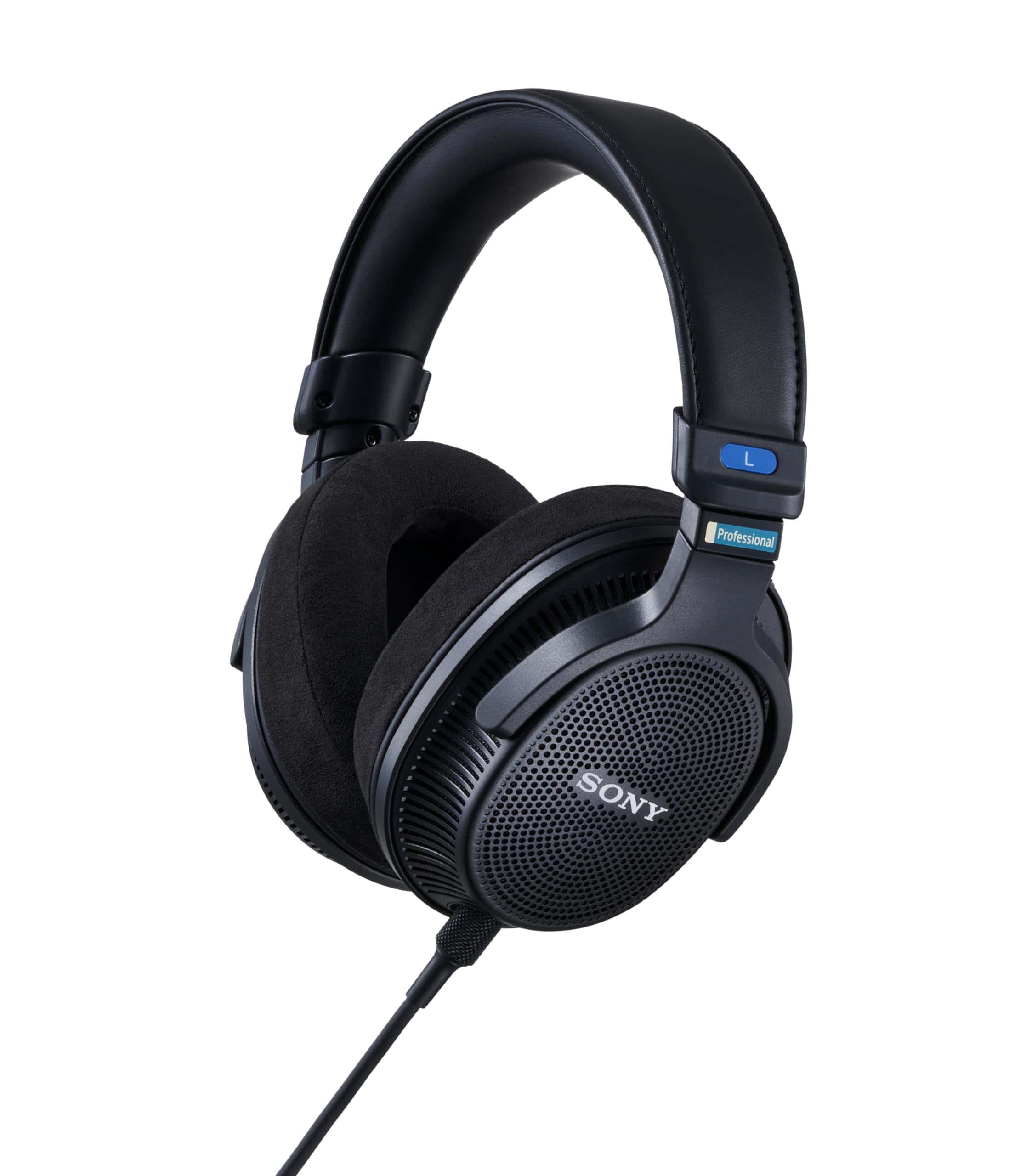
We think these headphones are a fantastic choice for anyone seeking studio-quality sound with exceptional comfort for long listening sessions.
Pros
- Extremely light and comfortable for hours of wear
- Wide, natural soundstage with excellent detail
- Detachable, high-quality cable with adaptor included
Cons
- Cable can make clicking noises with head movement
- Not water resistant
- Higher price point than some competitors
The Sony MDR-MV1 open back headphones feel like a breath of fresh air in the audio world. When we put them on, we noticed right away how light they are—just 226 grams. The soft suede ear pads rest gently against the ears, making them perfect for those marathon mixing sessions.
Sound quality is where these headphones truly shine. They reproduce music with stunning clarity across their impressive 5Hz-80kHz frequency range. We could hear details in familiar recordings that we’d never noticed before. The bass response is rich without being overwhelming, and the open-back design creates a spacious soundstage that closely matches what you’d hear in a professional studio environment.
Build quality doesn’t disappoint either. The aluminum construction feels solid but not heavy. We appreciate the thoughtful design touches like the detachable cable with its machined aluminum connectors. For serious audio work or critical listening, these headphones deliver reference-quality sound that makes them worth the investment. They’re particularly well-suited for mixing spatial audio and immersive content, though they excel with any music genre.
Linsoul Kiwi Ears Ellipse
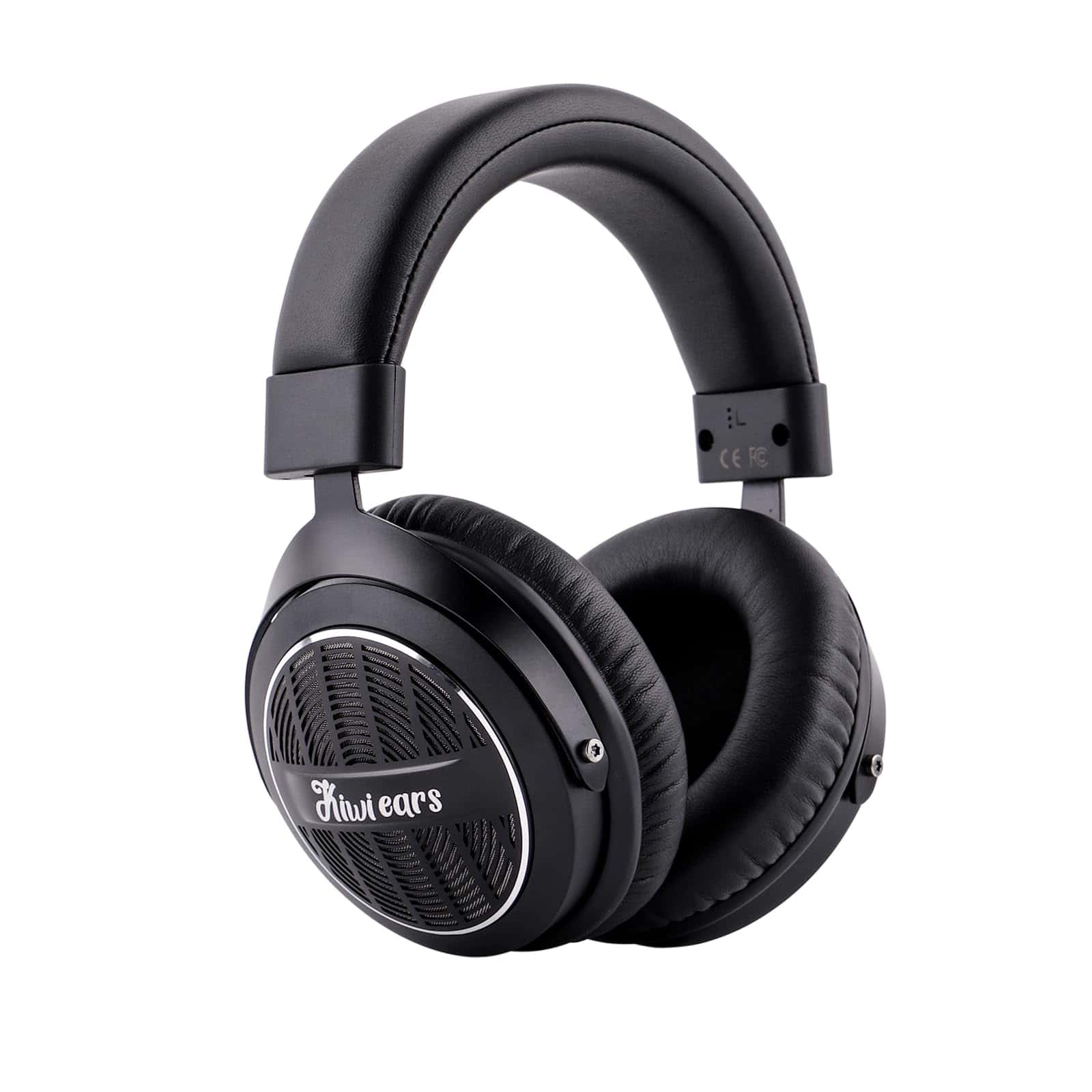
These open-back headphones deliver remarkable audio quality at their price point, making them a solid choice for anyone seeking audiophile-level sound without breaking the bank.
Pros
- Rich, natural sound with impressive soundstage
- Exceptionally comfortable for long listening sessions
- High-quality build with detachable cable design
Cons
- Limited noise isolation due to open-back design
- Cable is quite long at 3 meters
- May require an amp for optimal performance
We recently spent time with the Kiwi Ears Ellipse, and they quickly impressed us with their balanced sound profile. The 50mm dynamic drivers create a wide, spacious soundstage that makes music feel alive. Bass response is punchy without being overwhelming, while mids remain clear and detailed.
The comfort level surprised us during extended listening sessions. The headband features thick vegan leather padding that distributes weight evenly. Ear pads are similarly plush, creating a comfortable seal without putting too much pressure on the ears. At just over a pound, they’re lightweight enough for hours of use.
Build quality exceeds expectations for headphones in this price range. The metal construction feels sturdy in hand, and the detachable cable system adds versatility and longevity. We appreciate the included 6.3mm adapter that makes these headphones compatible with both portable devices and home audio equipment. For anyone looking to step into high-quality open-back headphones without spending hundreds more, these deserve serious consideration.
Buying Guide
When shopping for open back headphones, we need to consider several key factors. These headphones have unique features that set them apart from closed-back models.
Sound Quality
Sound quality should be your top priority. Open back designs typically offer wider soundstages and more natural audio reproduction. Listen for clear highs, balanced mids, and sufficient bass response.
Comfort
Comfort matters, especially for long listening sessions. Look for:
- Lightweight design
- Soft ear pads
- Adjustable headbands
- Low clamping force
Build Quality
Durability ensures your investment lasts. Check for:
- Quality materials
- Solid construction
- Replaceable parts
- Warranty options
Impedance and Power
| Impedance Range | What It Means |
|---|---|
| Low (16-32Ω) | Works with phones and laptops |
| Medium (32-100Ω) | May need amplification |
| High (100Ω+) | Requires dedicated amplifier |
Higher impedance often means better sound but requires more power to drive properly.
Cable Options
Removable cables add convenience and longevity. Some headphones offer balanced connections for improved sound with compatible equipment.
Price Range
Set a budget before shopping. Better materials and sound quality generally come with higher prices, but impressive options exist at various price points.
Usage Environment
Remember that open back designs leak sound and don’t block outside noise. They work best in quiet environments where sound leakage won’t bother others.
Frequently Asked Questions
We’ve gathered the most common questions about open-back headphones to help you find exactly what you need for your specific situation.
What are the most recommended open-back headphones for gaming?
For gaming, the Sennheiser HD 599 and the Philips SHP9500 stand out as excellent choices. They offer wide soundstages that help you pinpoint enemy locations in competitive games.
The Drop + Sennheiser PC38X is specifically designed for gaming with its attached microphone and comfortable fit for long sessions.
Audio-Technica ATH-AD700X is another great option with its lightweight design and excellent spatial awareness capabilities.
Which open-back headphones are considered the best for studio mixing?
The Sennheiser HD 600 and HD 650 remain industry standards for studio mixing. They provide neutral sound profiles that help sound engineers make accurate mixing decisions.
Beyerdynamic DT 1990 Pro offers exceptional detail retrieval and balanced frequency response, making it perfect for professional studio work.
AKG K712 Pro is favored for its wide soundstage and accurate imaging that helps with precise placement of instruments in a mix.
What options do I have for high-quality wireless open-back headphones?
The Hifiman Deva Pro combines open-back design with wireless convenience through its detachable Bluetooth module.
Sennheiser RS 185 uses a dedicated wireless transmitter rather than Bluetooth, providing lower latency and better sound quality.
The Audeze Penrose is a high-performance option that works well for both music and gaming applications.
Could you suggest open-back headphones that provide the best value for music listening?
The Philips Fidelio X2HR offers exceptional sound quality and comfort at a mid-range price point.
Grado SR80x provides the famous “Grado sound” with punchy bass and detailed treble without breaking the bank.
For slightly more investment, the HiFiMan Sundara delivers planar magnetic technology and balanced sound that competes with much more expensive models.
What are the top choices for open-back headphones under $200?
The Audio-Technica ATH-AD700X offers an incredibly spacious soundstage and comfort for under $150.
Philips SHP9500 provides remarkable clarity and balance at around $75, making it an incredible value.
Sennheiser HD 560S sits close to the $200 mark and offers near-reference quality sound with excellent imaging.
Are there any budget-friendly open-back headphones that match the quality of more expensive models?
The Koss KSC75 costs under $20 but offers sound quality that rivals headphones four times its price.
Grado SR60x presents the core Grado house sound at an entry-level price that punches well above its weight class.
The Philips SHP9500 mentioned earlier often gets compared favorably to headphones costing $300 or more, especially after simple pad upgrades.

